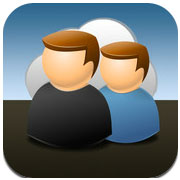
Am I making up a term? Maybe.
This column is inspired by the continuing dreadful news out of PC land. Last week Dell announced its profits for the just finished quarter dropped 72 percent year over year and Lenovo took over the No. 1 one spot in PC manufacturing from HP, though both companies saw declines.
Even though the declines in shipments of PCs and laptops are serious, the numbers being produced are still prodigious even as the numbers of tablets and smartphones continue to soar. There’s no need to quote numbers here — that’s not what this is about — but you can always check out Gartner and IDC, each of which tabulate this data, or refer to this article from The New York Times.
The big CRM story lurking in all this is not simply the move to mobile, which everyone already knows about. To listen to the chat these days you could get the mistaken impression that everything is going to the device but that’s way too simple an explanation. What’s really happening, as I see it, is that we are rapidly moving toward asymmetry in not just CRM but in all forms of computing.
One side of the divide is the server farm. Much as we would like to ignore it in favor of the sleek devices we carry around, the farm isn’t much changed from the mainframe, it’s just the way that we connect with it has changed and the rendering device — a.k.a. terminal — now fits in your hand and does more on its own. The other side is the device, which, when Steve Jobs launched the iPhone and the post-PC era, he christened a content consumption device.
It’s the server side, however, where things get made. That’s where marketing programs get designed and pushed out the door, where sales keeps the pipeline and compiles its reports and where so much of the infrastructure for service emanates. If the device is the content consumer, obviously the farm is where things are made.
Catastrophic Failures
With that bifurcation, what’s come into sharp relief is the idea that the server side has all the analytics, number crunching, inventory systems and services that can make the consumption devices valuable. So, as I see it, devices aren’t killing desktops and laptops, but they are limiting their growth, much as cars didn’t destroy rails but did sequester trains in the long haul freight business.
There’s enough server side power these days to do pretty much anything, and the device market is buzzing with new apps that aren’t simply new but represent, in many cases, unheard-of parts of business processes that mash up geolocation, databases, unstructured data files and analytics to do some pretty far-out things. We all have our own gee-whiz stories about new apps that do amazing things, so no need to point any out.
So what does this do to or for CRM? It’s not the handful of islands of information we had more than a decade ago, but you wouldn’t know it to look at some of the biggest corporations on the planet. In my research it is stunning and eye-opening to see how many corporations in consumer-vital industries have not caught on yet. They’re still running old mainframe apps and they are being crushed by an inability to deliver on basic customer expectations.
If you follow sentiment captured by, admittedly renegade sites like Amplicate.com (which I think has been taken down because of insufficient consumer interest earlier this year) and PissedConsumer.com, you see the results. Old systems charged with implementing newfangled automation schemes in banking, financial services and other high-volume consumer industries are failing many people in catastrophic ways, and customers are lashing out.
Smarter Automation
The disconnect between old-style computing and the new realities are striking and need to be solved by smarter automation that does more than hold onto old records. Companies are flying without radar in many cases as they cling to business models that don’t recognize the difference between a customer and a consumer. (Hint: Consumers bought what they were told to by Madison Avenue in the manufacturing age; customers subscribe to things and can be gone before you ever register a profit from them.)
In some respects, such as the need to know what customers think and need, CRM continues to expand beyond its original borders or even its most recent borders. It looks like you could make a case that everything that isn’t an accounting or ERP system is becoming CRM simply because it has the potential to gather data about people and possibly, though not necessarily, turn it into information that’s valuable to a vendor.
It really is becoming two-tiered in an asymmetrical way: one for capturing data and another for providing information — one that works fine on a little device and one that needs all the horsepower it can get to make sense of the data that is constantly collected.
























































